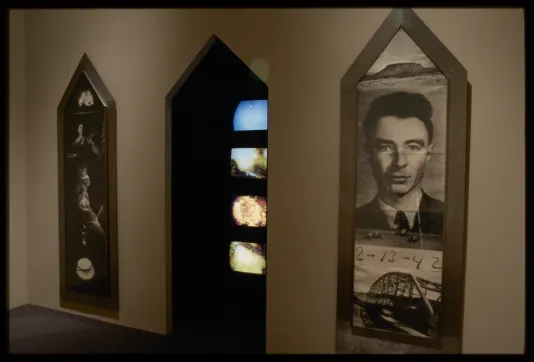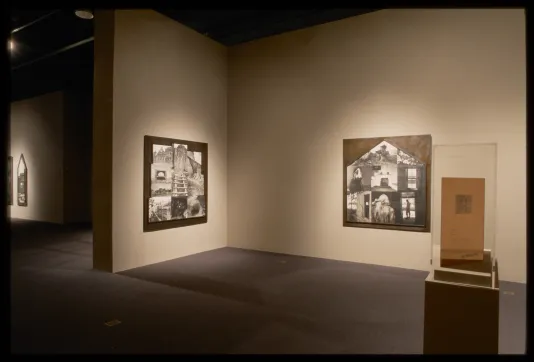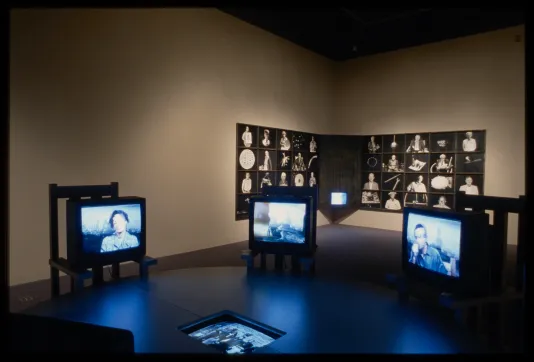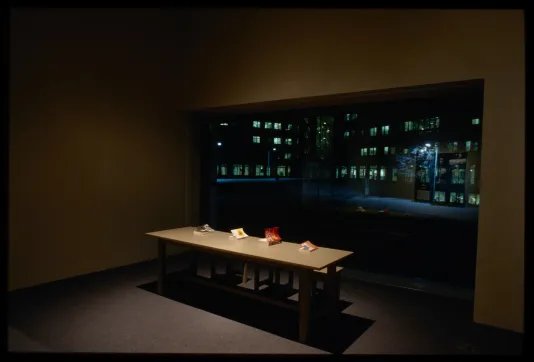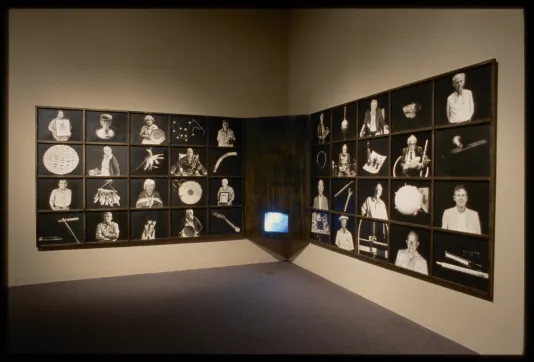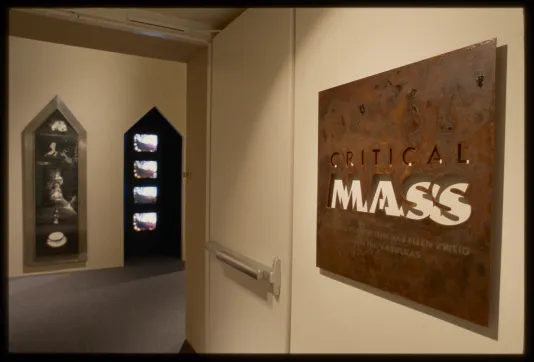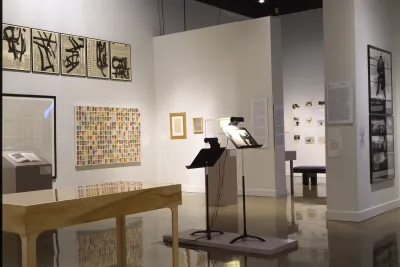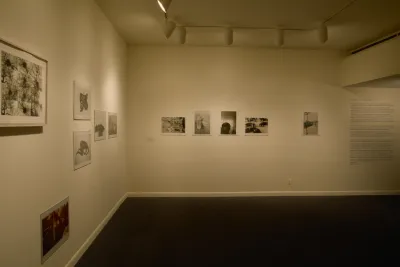Installation view, Critical Mass, MIT List Visual Arts Center, 1994. Archival slide.
Critical Mass
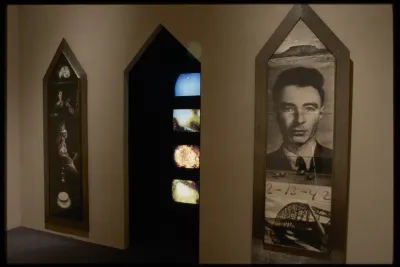
The 50th anniversary of the atomic bomb, developed at the Los Alamos Laboratory and first detonated in the southern New Mexico desert on July 16, 1943, inspired artists Meridel Rubenstein, Woody and Steina Vasulka, and Ellen Zweig to probe the ironic juxtaposition of two very different elements of American society.
Critical Mass, a multimedia installation, examines the unusual meeting of J. Robert Oppenheimer and other Manhattan Project scientists with the American Indians of San Ildefonso Pueblo, whose land adjoins Los Alamos, New Mexico. Their worlds fused at “the house at Otowi Bridge,” Edith Warner’s Rio Grande riverside home where both groups patronized a small restaurant she operated during the 1940s.
Part I of Critical Mass employs complex, extended photographic portraits of the café’s principles: (1) Edith Warner (2) project director Oppenheimer (3) Tilano Montoya, the former governor of San Ildefonso (4) Niles Bohr, the Danish physicist who discovered atomic structure and (5) Phillip Morrison, the physicist who assembled “Fat Man” before it dropped on Nagasaki. The portraits become landscapes of the scientists’ milieu and the sacred, physical world around them.
Part II, Archimedes’ Chamber, is a small room where legend and history meet. Oppenheimer is compared to Archimedes, the ancient Greek mathematician, physicist and inventor, who sacrificed a quiet life of theoretical science to defend his city-state, Syracuse, from Rome during the Punic Wars. At the chamber gateway stand two columns of five palladium prints on steel frames and a column of four video monitors which are in continual play of If Archimedes’. Text and performance by Zweig, video by the Vasulkas, and photographs by Rubenstein investigate parallels to Archimedes’ life as they search for Oppenheimer’s motives in developing the bomb.
Part III, The Meeting, is a representation of Warner’s house dominated by a dining table and six large chairs. Monitors built into each chair show videos of the scientists’ heads. A seventh monitor set in the table reveals hands serving a variety of foods, performing scientific experiments, and showing objects and photographs.
Critical Mass has been organized by the Museum of Fine Arts, Santa Fe, and is being circulated through TREX, the Traveling Exhibitions Program of the Museum of New Mexico. Funding for the exhibit development and the traveling exhibition has been provided by the National Endowment for the Arts and the Santa Fe Arts Commission.
